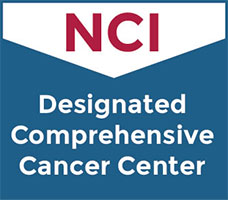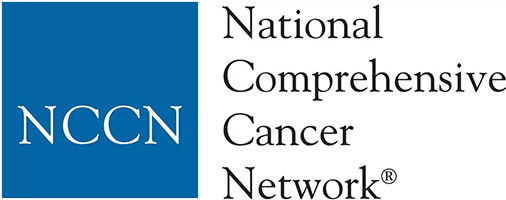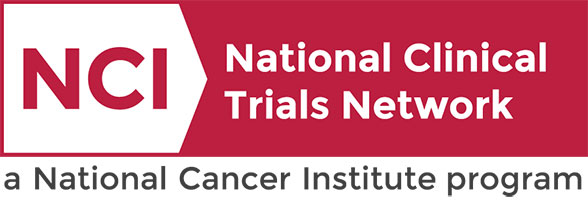Clinical Trials Search at Vanderbilt-Ingram Cancer Center
ALM-488 for Intra-Operative Visualization of Nerves in Head and Neck Surgery
This protocol describes prospective, open-label, blinded, randomized controlled, multicenter
pivotal studies to evaluate ALM-488.
pivotal studies to evaluate ALM-488.
Not Available
III
Rohde, Sarah
NCT05377554
VICCHN2258
A Study of Treatment for Medulloblastoma Using Sodium Thiosulfate to Reduce Hearing Loss
This phase III trial tests two hypotheses in patients with low-risk and average-risk medulloblastoma. Medulloblastoma is a type of cancer that occurs in the back of the brain. The term, risk, refers to the chance of the cancer coming back after treatment. Subjects with low-risk medulloblastoma typically have a lower chance of the cancer coming back than subjects with average-risk medulloblastoma. Although treatment for newly diagnosed average-risk and low-risk medulloblastoma is generally effective at treating the cancer, there are still concerns about the side effects of such treatment. Side effects or unintended health conditions that arise due to treatment include learning difficulties, hearing loss or other issues in performing daily activities. Standard therapy for newly diagnosed average-risk or low-risk medulloblastoma includes surgery, radiation therapy, and chemotherapy (including cisplatin). Cisplatin may cause hearing loss as a side effect. In the average-risk medulloblastoma patients, this trial tests whether the addition of sodium thiosulfate (STS) to standard of care chemotherapy and radiation therapy reduces hearing loss. Previous studies with STS have shown that it may help reduce or prevent hearing loss caused by cisplatin. In the low-risk medulloblastoma patients, the study tests whether a less intense therapy (reduced radiation) can provide the same benefits as the more intense therapy. The less intense therapy may cause fewer side effects. Radiation therapy uses high energy x-rays to kill tumor cells and shrink tumors. Cisplatin is in a class of medications known as platinum-containing compounds. It works by killing, stopping or slowing the growth of cancer cells. The overall goals of this study are to see if giving STS along with standard treatment (radiation therapy and chemotherapy) will reduce hearing loss in medulloblastoma patients and to compare the overall outcome of patients with medulloblastoma treated with STS to patients treated without STS on a previous study in order to make sure that survival and recurrence of tumor is not worsened.
Not Available
III
Not Available
NCT05382338
VICC-NTPED23124
Inotuzumab Ozogamicin in Treating Younger Patients with B-Lymphoblastic Lymphoma or Relapsed or Refractory CD22 Positive B Acute Lymphoblastic Leukemia
This phase II trial studies how well inotuzumab ozogamicin works in treating younger patients with B-lymphoblastic lymphoma or CD22 positive B acute lymphoblastic leukemia that has come back (relapsed) or does not respond to treatment (refractory). Inotuzumab ozogamicin is a monoclonal antibody, called inotuzumab, linked to a toxic agent called ozogamicin. Inotuzumab attaches to CD22 positive cancer cells in a targeted way and delivers ozogamicin to kill them.
Not Available
II
Not Available
NCT02981628
COGAALL1621
A Study Using a New Drug, Nivolumab, in Combination with Chemotherapy Drugs to Treat a Type of Cancer Called Nasopharyngeal Carcinoma (NPC)
This phase II trial tests how well nivolumab in combination with chemotherapy drugs along with radiation therapy works in treating patients with nasopharyngeal cancer. Immunotherapy with monoclonal antibodies, such as nivolumab, may help the body's immune system attack the cancer, and may interfere with the ability of tumor cells to grow and spread. Chemotherapy drugs, such as gemcitabine and cisplatin, work in different ways to stop the growth of tumor cells, either by killing the cells, by stopping them from dividing, or by stopping them from spreading. Radiation therapy uses high energy x-rays, particles, or radioactive seeds to kill cancer cells and shrink tumors. Researchers want to find out what effects, good and/or bad, adding nivolumab to chemotherapy has on patients with newly diagnosed NPC. In addition, they want to find out if children with NPC may be treated with less radiation therapy and whether this decreases the side effects of therapy.
Not Available
II
Not Available
NCT06064097
VICC-NTPED24105
Dinutuximab with Chemotherapy, Surgery and Stem Cell Transplantation for the Treatment of Children with Newly Diagnosed High Risk Neuroblastoma
This phase III trial tests how well adding dinutuximab to induction chemotherapy along with standard of care surgery radiation and stem cell transplantation works for treating children with newly diagnosed high risk neuroblastoma. Dinutuximab is a monoclonal antibody that binds to a molecule called GD2, which is found in greater than normal amounts on some types of cancer cells. This helps cells of the immune system kill the cancer cells. Chemotherapy drugs such as cyclophosphamide, topotecan, cisplatin, etoposide, vincristine, dexrazoxane, doxorubicin, temozolomide, irinotecan and isotretinoin, work in different ways to stop the growth of cancer cells, either by killing the cells, by stopping them from dividing or by stopping them from spreading. During induction, chemotherapy and surgery are used to kill and remove as much tumor as possible. During consolidation, very high doses of chemotherapy are given to kill any remaining cancer cells. This chemotherapy also destroys healthy bone marrow, where blood cells are made. A stem cell transplant is a procedure that helps the body make new healthy blood cells to replace the blood cells that may have been harmed by the cancer and/or chemotherapy. Radiation therapy is also given to the site where the cancer originated (primary site) and to any other areas that are still active at the end of induction.
Not Available
III
Benedetti, Daniel
NCT06172296
VICC-NTPED24104
Venetoclax in Children With Relapsed Acute Myeloid Leukemia (AML)
Multiple Cancer Types
A study to evaluate if the randomized addition of venetoclax to a chemotherapy backbone
(fludarabine/cytarabine/gemtuzumab ozogamicin [GO]) improves survival of
children/adolescents/young adults with acute myeloid leukemia (AML) in 1st relapse who are
unable to receive additional anthracyclines, or in 2nd relapse.
(fludarabine/cytarabine/gemtuzumab ozogamicin [GO]) improves survival of
children/adolescents/young adults with acute myeloid leukemia (AML) in 1st relapse who are
unable to receive additional anthracyclines, or in 2nd relapse.
Pediatric Leukemia,
Pediatrics
III
Smith, Christine
NCT05183035
VICCPED2237
Belzutifan/MK-6482 for the Treatment of Advanced Pheochromocytoma/Paraganglioma (PPGL), Pancreatic Neuroendocrine Tumor (pNET), Von Hippel-Lindau (VHL) Disease-Associated Tumors, Advanced Gastrointestinal Stromal Tumor (wt GIST), or Solid Tumors With HIF-2 Related Genetic Alterations (MK-6482-015)
This is a study to evaluate the efficacy and safety of belzutifan monotherapy in participants
with advanced pheochromocytoma/paraganglioma (PPGL), pancreatic neuroendocrine tumor (pNET),
von Hippel-Lindau (VHL) Disease-Associated Tumors, Advanced Gastrointestinal Stromal Tumor
(wt GIST), or Advanced Solid Tumors With hypoxia inducible factor-2 alpha (HIF-2) related
genetic alterations. The primary objective of the study is to evaluate the objective response
rate (ORR) of belzutifan per Response Evaluation Criteria in Solid Tumors Version 1.1 (RECIST
1.1) by blinded independent central review (BICR).
with advanced pheochromocytoma/paraganglioma (PPGL), pancreatic neuroendocrine tumor (pNET),
von Hippel-Lindau (VHL) Disease-Associated Tumors, Advanced Gastrointestinal Stromal Tumor
(wt GIST), or Advanced Solid Tumors With hypoxia inducible factor-2 alpha (HIF-2) related
genetic alterations. The primary objective of the study is to evaluate the objective response
rate (ORR) of belzutifan per Response Evaluation Criteria in Solid Tumors Version 1.1 (RECIST
1.1) by blinded independent central review (BICR).
Not Available
II
Ramirez, Robert
NCT04924075
VICCMD2132
A Trial Comparing Unrelated Donor BMT With IST for Pediatric and Young Adult Patients With Severe Aplastic Anemia (TransIT, BMT CTN 2202)
Pediatrics
Pediatrics
Severe Aplastic Anemia (SAA) is a rare condition in which the body stops producing enough new
blood cells. SAA can be cured with immune suppressive therapy or a bone marrow transplant.
Regular treatment for patients with aplastic anemia who have a matched sibling (brother or
sister), or family donor is a bone marrow transplant. Patients without a matched family donor
normally are treated with immune suppressive therapy (IST). Match unrelated donor (URD) bone
marrow transplant (BMT) is used as a secondary treatment in patients who did not get better
with IST, had their disease come back, or a new worse disease replaced it (like leukemia).
This trial will compare time from randomization to failure of treatment or death from any
cause of IST versus URD BMT when used as initial therapy to treat SAA.
The trial will also assess whether health-related quality of life and early markers of
fertility differ between those randomized to URD BMT or IST, as well as assess the presence
of marrow failure-related genes and presence of gene mutations associated with MDS or
leukemia and the change in gene signatures after treatment in both study arms.
This study treatment does not include any investigational drugs. The medicines and procedures
in this study are standard for treatment of SAA.
blood cells. SAA can be cured with immune suppressive therapy or a bone marrow transplant.
Regular treatment for patients with aplastic anemia who have a matched sibling (brother or
sister), or family donor is a bone marrow transplant. Patients without a matched family donor
normally are treated with immune suppressive therapy (IST). Match unrelated donor (URD) bone
marrow transplant (BMT) is used as a secondary treatment in patients who did not get better
with IST, had their disease come back, or a new worse disease replaced it (like leukemia).
This trial will compare time from randomization to failure of treatment or death from any
cause of IST versus URD BMT when used as initial therapy to treat SAA.
The trial will also assess whether health-related quality of life and early markers of
fertility differ between those randomized to URD BMT or IST, as well as assess the presence
of marrow failure-related genes and presence of gene mutations associated with MDS or
leukemia and the change in gene signatures after treatment in both study arms.
This study treatment does not include any investigational drugs. The medicines and procedures
in this study are standard for treatment of SAA.
Pediatrics
III
Connelly, James
NCT05600426
VICCPED2295
Studying the Effect of Levocarnitine in Protecting the Liver from Chemotherapy for Leukemia or Lymphoma
Multiple Cancer Types
This phase III trial compares the effect of adding levocarnitine to standard chemotherapy vs. standard chemotherapy alone in protecting the liver in patients with leukemia or lymphoma. Asparaginase is part of the standard of care chemotherapy for the treatment of acute lymphoblastic leukemia (ALL), lymphoblastic lymphoma (LL), and mixed phenotype acute leukemia (MPAL). However, in adolescent and young adults (AYA) ages 15-39 years, liver toxicity from asparaginase is common and often prevents delivery of planned chemotherapy, thereby potentially compromising outcomes. Some groups of people may also be at higher risk for liver damage due to the presence of fat in the liver even before starting chemotherapy. Patients who are of Japanese descent, Native Hawaiian, Hispanic or Latinx may be at greater risk for liver damage from chemotherapy for this reason. Carnitine is a naturally occurring nutrient that is part of a typical diet and is also made by the body. Carnitine is necessary for metabolism and its deficiency or absence is associated with liver and other organ damage. Levocarnitine is a drug used to provide extra carnitine. Laboratory and real-world usage of the dietary supplement levocarnitine suggests its potential to prevent or reduce liver toxicity from asparaginase. The overall goal of this study is to determine whether adding levocarnitine to standard of care chemotherapy will reduce the chance of developing severe liver damage from asparaginase chemotherapy in ALL, LL and/or MPAL patients.
Leukemia,
Pediatric Leukemia
III
Not Available
NCT05602194
VICC-NTPED23475
Long-term Follow-up Study for Participants of Kite-Sponsored Interventional Studies Treated With Gene-Modified Cells
Multiple Cancer Types
The goal of this clinical study is to learn more about the long-term safety, effectiveness
and prolonged action of Kite study drugs, axicabtagene ciloleucel, brexucabtagene autoleucel,
KITE-222, KITE-363, KITE-439, KITE-585, and KITE-718, in participants of Kite-sponsored
interventional studies.
and prolonged action of Kite study drugs, axicabtagene ciloleucel, brexucabtagene autoleucel,
KITE-222, KITE-363, KITE-439, KITE-585, and KITE-718, in participants of Kite-sponsored
interventional studies.
Hematologic,
Leukemia,
Lymphoma,
Pediatric Leukemia,
Pediatric Lymphoma
N/A
Kassim, Adetola
NCT05041309
VICCCTT2170


